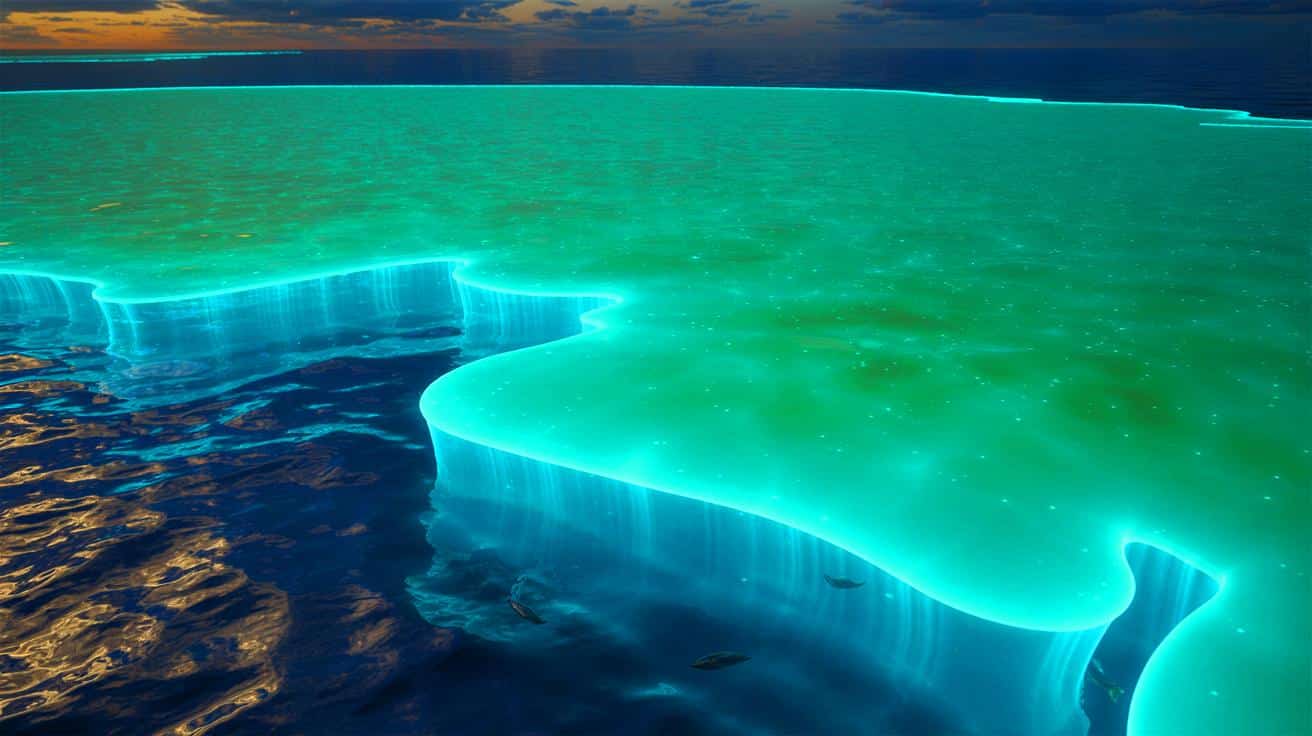In a remarkable natural event, scientists and the public alike have been captivated by a striking turquoise shimmer documented by NASA satellites along the southern coast of Australia. This phenomenon stems from a massive bloom of bioluminescent phytoplankton, creating a spectacle that is even visible from outer space. This vibrant display has reignited interest in the intricate processes that govern our oceans, showcasing the role these organisms play in maintaining healthy marine ecosystems that support a diverse range of marine life.
NASA’s PACE spacecraft was instrumental in capturing the stunning bioluminescent glow in the waters nestled between mainland Australia and Tasmania. Equipped with advanced imaging technology, the satellite revealed a breathtaking turquoise light brightening the ocean. This zone, characterized by powerful currents and deep channels, is a vital maritime corridor that leads into Port Phillip Bay near Melbourne. Such high-resolution images from space not only enrich our understanding of oceanic conditions but also highlight the dynamic nature of marine environments.
Although this is not the first instance of observing similar phenomena, prior satellite missions like Suomi NPP, Terra, and Aqua have provided extensive data. These consistent sightings allow researchers to track the seasonal patterns of phytoplankton blooms, showcasing the ocean’s ever-evolving dynamics.
The science behind the mesmerizing glow relates to elevated levels of chlorophyll-a within the phytoplankton. This green pigment is crucial for photosynthesis, enabling these creatures to thrive in the ocean’s illuminated areas, where sunlight penetrates the water. In these nutrient-rich waters, phytoplankton absorb essential nutrients, such as nitrogen and phosphorus, released from decaying marine organisms.
Jochen Kaempf, an oceanographer at Flinders University, has studied these blooms extensively. He points out that the green filaments seen from space indicate a widespread bloom along the shelf break at a depth of approximately 500 feet. The surrounding blue hues may be caused by sediment disturbance in shallower areas or various other phytoplankton species. This intricate interplay of marine elements underscores the complexity of oceanic ecosystems, exemplifying the balance of life beneath the waves.
Phytoplankton are fundamental to the marine food web, sustaining a variety of ocean life. Along the Bonney Coast, these blooms create critical feeding grounds for numerous marine species. Estimates suggest that around 80 blue whales are lured to the region annually, attracted by an abundance of krill and smaller organisms that thrive on phytoplankton. Furthermore, these blooms provide nourishment for sardines, anchovies, tuna, and crabs, enhancing the area’s marine biodiversity.
In addition to their ecological significance, these microscopic algae are vital to global oxygen production and climate regulation. NASA scientists highlight that such visible blooms from space reflect the importance of ocean circulation, nutrient cycling, and seasonal dynamics along Australia’s southern coast. The presence of bioluminescent phytoplankton not only reveals the beauty of these microorganisms but also emphasizes the ocean’s essential role in supporting life on Earth and the interconnections between marine processes and overall environmental health.
As research into our oceans progresses, discoveries like the glowing phytoplankton off Australia’s coast provide meaningful insights into marine ecosystems. These captivating phenomena inspire scientific inquiry, underscoring the importance of oceanographic research in tackling climate change and maintaining ecological balance. With advancements in satellite technology, the capability to monitor and study these events will continue to grow, paving the way for further scientific exploration and environmental preservation.
The enchanting glow observed from space illustrates the possibilities that technological innovations hold in uncovering the mysteries of our planet. As exploration of the oceans advances, it prompts the question of what other hidden wonders are awaiting discovery beneath the surface. The ongoing pursuit of knowledge in marine science is crucial for addressing climate challenges and ensuring biodiversity for generations to come. Such natural phenomena extend their significance beyond their visual allure, reminding us of the interconnectedness of life on Earth and the delicate balance that supports our planet’s ecosystems.












